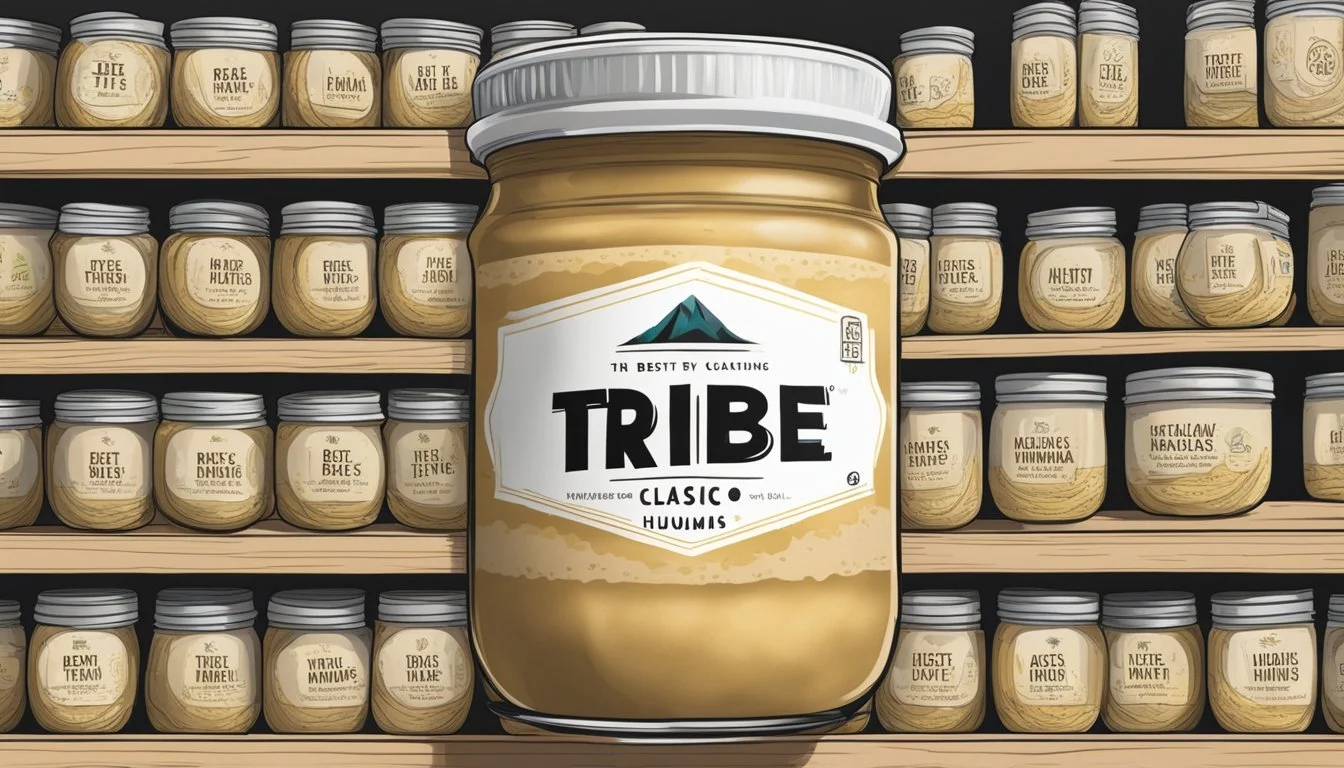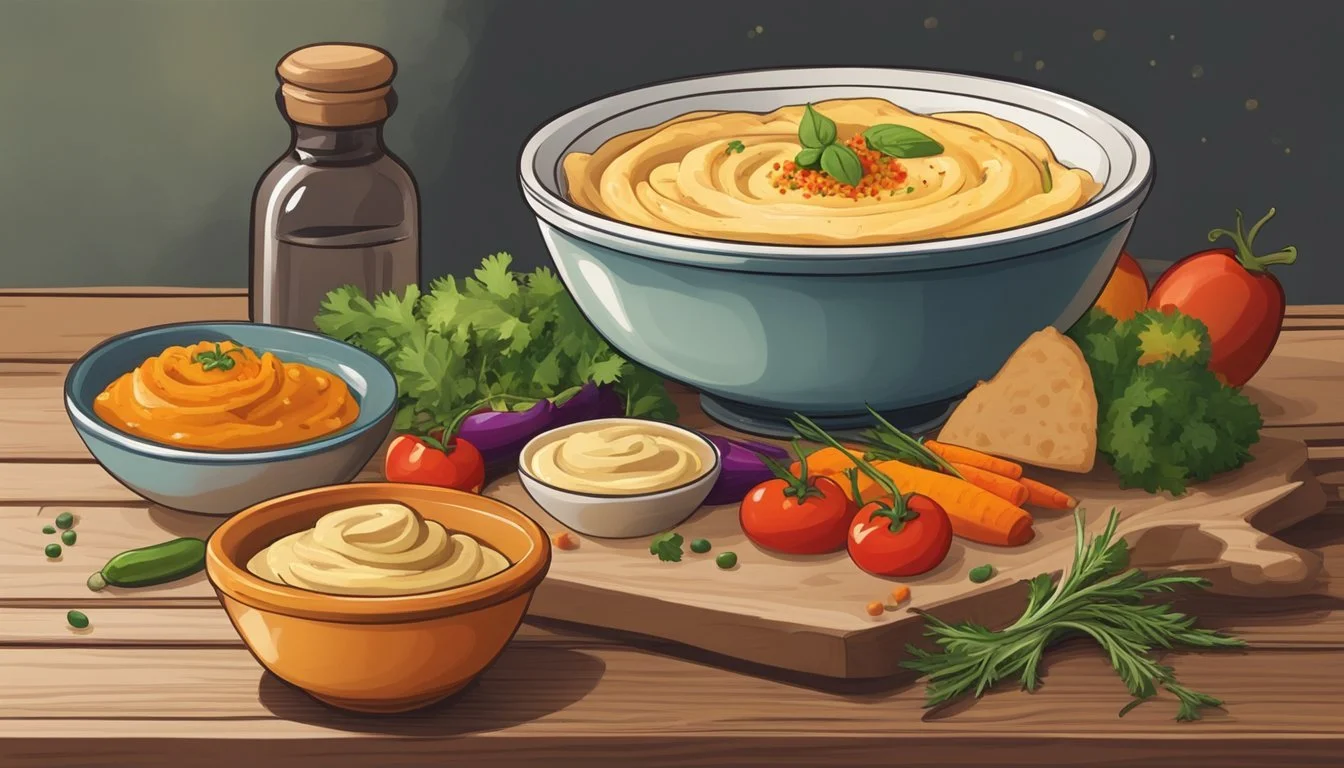How Long Does Tribe Classic Hummus Last?
Shelf Life and Storage Tips
Hummus is a widely appreciated spread originating from the Middle East, which has become a staple in many diets around the world, particularly for its health benefits and versatility. As a Mediterranean favorite, it typically consists of a blend of chickpeas, tahini, olive oil, lemon juice, and garlic, though variations in flavor and ingredients are common. Among the many brands available, Tribe Classic Hummus is known for its commitment to simple and pure ingredients without artificial preservatives, capturing the essence of traditional hummus taste.
When it comes to the lifespan of Tribe Classic Hummus, consumers find that the shelf life is an important aspect to consider to enjoy its fresh taste and maintain food safety. Generally speaking, once opened, store-bought hummus like Tribe can last up to a week in the refrigerator. This duration can be influenced by a variety of factors, including how the hummus is stored, the temperature of the fridge, and how it is handled during consumption. Proper storage is key, and one should always ensure the hummus is covered or sealed to prevent contamination and prolong its freshness.
Determining whether the hummus has already gone bad is often clear from sensory cues. A sour smell and an altered taste are indicators that the hummus should no longer be consumed. Additionally, the presence of mold or any other visual spoilage signs are straightforward reasons to discard the product. Maintaining awareness of these signs is important for anyone who enjoys this delectable spread, ensuring the Tribe Classic Hummus is consumed while it's at its best quality and flavor.
Understanding Hummus
Hummus is a flavorful spread that has played a significant role in culinary traditions and offers a range of health benefits attributed to its nutritious ingredients.
History and Cultural Significance
Hummus has its roots in the Middle East, with a history that can be traced back to ancient times. Its key ingredient, chickpeas, has been a staple in the region for centuries. The cultural significance of hummus lies in its ubiquitous presence in Middle Eastern cuisine, and it has become a symbol of hospitality and communal eating.
Variations and Flavors
Traditional hummus combines chickpeas, tahini (sesame seed paste), garlic, lemon juice, and olive oil into a smooth, creamy paste. However, there are numerous variations that introduce different flavors such as roasted red pepper, sun-dried tomato, or Kalamata olive. This versatility has led to a global appreciation of the dish.
Health Benefits and Nutritional Content
Due to its wholesome ingredients, hummus is rich in fiber and protein, which contribute to its health benefits. Chickpeas, for instance, are high in iron and promote digestive health. Tahini contains healthy fats, essential for a balanced diet. Here is a brief nutritional overview:
Fiber: Aids in digestive health and can help maintain a healthy weight.
Protein: Essential for muscle repair and growth.
Iron: Vital for oxygen transport and energy production.
A serving of hummus can thereby be a nutritious addition to one's diet, offering multiple essential nutrients in a delicious form.
Manufacturing of Hummus
The manufacturing of hummus combines a specific selection of ingredients with commercial production techniques to create a product that is both tasty and has a shelf life suitable for retail.
Ingredients Used in Hummus Production
The foundation of hummus consists of chickpeas, which are often soaked and then ground to create a smooth paste. Essential to the flavor profile are tahini (a sesame seed paste), lemon juice, and garlic. For additional taste and to elongate shelf life, manufacturers may include citric acid as a natural preservative. Some recipes may incorporate herbs and spices for variety. In commercial settings, preservatives may also be added to ensure that the hummus remains fresh until the expiration date.
Primary ingredients:
Chickpeas
Tahini
Garlic
Lemon juice
Common preservatives:
Citric acid
Commercial Hummus Preparation Processes
During commercial hummus production, the ingredients are mixed together in industrial food processing equipment designed to achieve a uniform and smooth consistency. The mixture is then pasteurized, a critical step that helps to eliminate any harmful bacteria and further extends the expiration date of the hummus. By heating the hummus to a specific temperature, its safety and shelf life are enhanced without the need for excessive chemical preservatives.
Once pasteurization is complete, the hummus is rapidly cooled and packaged in a controlled environment to minimize the risk of contamination. The packaging is often vacuum-sealed to reduce the presence of oxygen, which can lead to spoilage. This packaging process is vital in maintaining the freshness and flavor of the hummus until it is opened and consumed.
Hummus Storage Guidelines
Proper hummus storage is critical to ensure its freshness and to extend its shelf life. This involves maintaining the right temperature, using suitable containers, and being able to identify when it's no longer safe to eat.
Optimal Storage Conditions for Hummus
To maintain the quality of Tribe Classic hummus, it should be stored in a cool, dark place away from heat sources. An unopened container of hummus can be kept in the pantry until the "best if used by" date. Once opened, Tribe Classic hummus must be transferred to an airtight container if not in its original packaging.
Pantry (unopened): Keep in a cool, dark place.
Refrigerator (opened): Place in an airtight container.
Refrigeration and Freezing Options
After opening, Tribe Classic hummus should be refrigerated to prevent spoilage. The shelf life of refrigerated hummus is typically up to 7 days. Although not mentioned specifically for Tribe hummus, generally, hummus can be frozen to extend its usability beyond the refrigeration period. If opting to freeze, here's a simple guideline:
Refrigeration: Consume within 7 days for optimal freshness.
Freezing: Not specified for Tribe hummus; general practice is to use frozen hummus within a few months.
Signs of Spoilage and Contamination
Food safety is paramount, and being able to recognize signs of spoilage is vital to prevent food poisoning. Tribe Classic hummus that has gone bad will often exhibit:
Off-putting Odor: A sour or unusual smell.
Change in Texture: Presence of mold, or a separation of liquid.
Taste Alteration: An unpleasant or sour taste.
Expiration dates are also an important indicator, and any hummus past this date should be discarded. Always inspect the hummus before use, even if it has been stored properly and is within the expiration date.
Shelf Life of Different Types of Hummus
The shelf life of hummus varies depending on its type, preparation, and storage conditions. Understanding these factors is essential for maintaining its freshness and safety.
Store-Bought Hummus
Refrigerated: Store-bought hummus typically lasts 6-7 days after opening when kept in the refrigerator. Manufacturers use specific preservation techniques and a sterile, contamination-controlled environment to extend the shelf life of their products.
Homemade Hummus
Refrigerated: Homemade hummus has a shorter shelf life than its store-bought counterpart due to the lack of commercial preservatives; it remains fresh for 3-4 days in the refrigerator. Proper storage in a tightly sealed container is crucial to maximize its shelf life.
Unrefrigerated and Shelf-Stable Hummus
Unrefrigerated: Fresh hummus should not be left unrefrigerated for more than a couple of hours due to the risk of bacterial growth.
Shelf-Stable: Some commercial hummus is processed to be shelf-stable. This type of hummus can last until the 'best by date' as long as it is unopened and stored in a cool, dry place. Once opened, it should be refrigerated and treated like refrigerated store-bought hummus.
Safely Consuming Hummus
Proper evaluation of Tribe Classic Hummus's condition is crucial for safe consumption. Knowing how to identify spoilage, understanding the risks of consuming expired hummus, and methods to preserve freshness are all essential.
How to Tell If Hummus Is Bad
One can determine if hummus has gone bad by examining its smell, texture, and appearance. Fresh hummus should have a pleasant, nutty scent and a smooth, creamy texture. If the hummus emits a sour smell or an off odor, it may have started to spoil. An altered taste or any signs of mold also indicate that the hummus is not safe for consumption. Upon noticing separation or a change in texture, such as becoming overly watery or stiff, one should discard the product.
Risks of Eating Expired Hummus
Consuming expired hummus poses several health risks due to the growth of harmful bacteria. The presence of spoilage bacteria can lead to foodborne illnesses, which may present with symptoms such as nausea, vomiting, and diarrhea. It is particularly important to avoid eating hummus that has changed in smell, taste, or texture, as these changes can signal the presence of potentially dangerous microbes.
How to Extend the Freshness of Hummus
To extend the shelf life of hummus and reduce the risk of spoilage, adhere to the following guidelines:
Refrigeration: Keep hummus refrigerated at all times, at or below 40°F (4°C).
Sealed Container: After opening, ensure that the hummus is tightly sealed in its container to prevent air exposure.
Utensil Usage: Always use a clean utensil when serving hummus to prevent cross-contamination.
Date Tracking: Mark the date of opening and consume the hummus within 7 days to ensure freshness.
Tips for Enjoying Hummus
Hummus, a creamy spread full of flavor, can be enjoyed in a multitude of ways. Its versatility allows it to be paired with various foods or incorporated into recipes, offering a healthy option for any meal.
Serving Suggestions
One can savor Tribe Classic Hummus by spreading it thickly on warm pita bread, allowing its smooth texture and rich taste to complement the bread's slight chewiness. It also serves wonderfully as a dip for crisp vegetables like carrots and cucumbers, creating a balance between the creamy hummus and the fresh crunch of the produce.
Pairing Options
Hummus pairs excellently with a wide range of flavors. Introducing spices such as cumin, paprika, or za'atar can elevate the hummus experience by adding depth to its flavor profile. For a more substantial meal, adding hummus as a side to grilled chicken or lamb offers a nutritious and protein-rich component to one's diet.
Creative Uses in Recipes
In recipes, Tribe Classic Hummus can replace mayonnaise to add its distinct flavor and creamy texture to sandwiches and wraps. For a creative twist, one might incorporate hummus into pasta sauces or salad dressings, boosting both the dish's nutritional value and taste. With hummus' rich ingredients, including chickpeas, tahini, and olive oil, it contributes both healthy fats and proteins when included in these dishes.
FAQs About Hummus
When discussing the shelf life and storage of Tribe Classic Hummus, it's important to consider refrigeration, freezing, and the period it can be left at room temperature. Each of these factors can impact the taste and safety of the product.
Does Hummus Need to Be Refrigerated?
Unopened Hummus: An unopened container of Tribe Classic Hummus should be kept refrigerated. Keeping it refrigerated ensures its freshness until the expiration date marked on the package.
Opened Hummus: Once opened, Tribe Classic Hummus must be refrigerated and is generally safe to consume within 4 to 7 days. To maintain quality and food hygiene, it is crucial to store it at a consistent temperature below 40°F (4°C).
Can You Freeze Hummus?
Tribe Classic Hummus can be frozen to extend its shelf life. Use these guidelines for freezing and defrosting:
Freeze: Store in an airtight container. Leave some space for expansion.
Defrost: Thaw in the refrigerator for several hours or overnight before consuming.
The texture of hummus may change after freezing and thawing; stirring before serving can help restore its consistency.
How Long Can Hummus Sit Out?
Hummus should not be left at room temperature for more than two hours. Food hygiene guidelines suggest that perishable items left out for longer can enter the "danger zone" (between 40°F - 140°F; 4°C - 60°C) where bacteria grow rapidly. If hummus has been exposed to higher temperatures or for an extended period, it's best to discard it to avoid the risk of foodborne illness.








